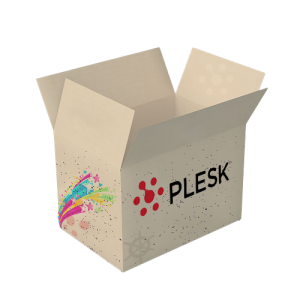In today’s competitive job market, attracting and retaining top talent is more challenging than ever. As companies strive to differentiate themselves, offering competitive salaries and traditional benefits may no longer be enough. Modern employees, particularly millennials and Generation Z, are increasingly prioritizing their well-being and seeking employers that provide a holistic approach to health and work-life balance. A wellness-oriented office is more than just a perk; it has become a critical factor in attracting and retaining high-performing employees. This article explores why a wellness-oriented office is essential for today’s workforce and offers new and unique ideas to create a work environment that promotes employee health and happiness.
1. The Growing Importance of Employee Wellness
The shift towards prioritizing employee wellness has been driven by several factors, including the recognition of the impact of workplace stress on health, productivity, and job satisfaction. Studies have shown that employees who feel supported in their well-being are more engaged, less likely to experience burnout, and more loyal to their employers. As a result, organizations are increasingly focusing on creating wellness-oriented offices that support physical, mental, and emotional health.
Mental Health Awareness
The stigma surrounding mental health is happily gradually diminishing, and more employees are openly discussing their mental health needs. Companies that take proactive steps to support mental health, such as offering counseling services, mental health days, and stress management programs, are more likely to attract and retain employees. A wellness-oriented office that prioritizes mental health shows that the company values its employees beyond their work output.
Physical Health and Fitness
Encouraging physical activity and fitness is another critical aspect of a wellness-oriented office. Sedentary lifestyles, often associated with desk jobs, can lead to various health issues, such as obesity, heart disease, and musculoskeletal problems. By promoting physical health through ergonomic office design, fitness programs, and active workstations, companies can create a healthier, more energetic workforce.
Work-Life Balance
A wellness-oriented office also emphasizes work-life balance. Employees who can manage their work commitments alongside personal responsibilities are more satisfied and less likely to experience burnout. Flexible work arrangements, such as giving remote work options and flexible hours, are essential components of a wellness-oriented approach that respects employees' need for balance.
2. Unique Ideas for a Wellness-Oriented Office
Creating a wellness-oriented office goes beyond the standard offerings like gym memberships and healthy snacks. Here are some innovative and unique ideas to foster a culture of wellness and well-being in the workplace:
Biophilic Design
Biophilic design involves incorporating natural elements into the workplace to enhance employees' connection to nature. Research shows that exposure to nature reduces stress, improves cognitive function, and boosts creativity. Implementing biophilic design can include:
- Living Walls: Installing green walls with plants and moss can purify the air and provide a visually calming environment. Living walls also add an aesthetic appeal, making the office a more pleasant place to work.
- Natural Light and Views: Maximizing access to natural light and outdoor views can significantly impact employee well-being. Offices with large windows and open spaces that allow for plenty of daylight and views of greenery can reduce stress and increase happiness.
- Water Features: Introducing water features such as fountains or indoor ponds can create a soothing atmosphere. The sound of flowing water can reduce anxiety and improve focus.
Mindfulness and Meditation Spaces
Creating dedicated mindfulness and meditation spaces within the office can provide employees with a place to unwind, reflect, and recharge. These spaces should be quiet, comfortable, and free from distractions. Unique features could include:
- Meditation Pods: Private pods equipped with calming lights, soothing music, and guided meditation apps can offer employees a quick escape from the demands of work.
- Virtual Reality (VR) Relaxation: Utilizing VR technology to create immersive relaxation experiences can be a novel way to reduce stress. Employees can take a virtual walk through a forest, relax on a beach, or meditate in a peaceful garden, all from the comfort of the office.
- Well-being Initiatives: Classes, mindfulness workshops, nutrition counseling, or fitness challenges.
Social Well-being Initiatives
Social connections are vital for emotional well-being. Creating opportunities for employees to build relationships and connect with their colleagues can enhance job satisfaction and reduce feelings of isolation. Consider the following initiatives:
- Wellness Challenges: Organize team-based wellness challenges that encourage friendly competition and camaraderie. Activities could include step-count challenges, mindfulness challenges, or healthy eating contests.
- Community Involvement: Encourage employees to participate in community service and volunteer projects. Engaging in meaningful activities together can foster a sense of purpose and strengthen social bonds.
- Employee Resource Groups (ERGs): Establish ERGs that focus on different aspects of well-being, such as mental health support, parenting, or fitness. These groups can provide a supportive network and a platform for sharing experiences and resources.
3. Virtual Offices and Employee Wellness
Virtual offices play a significant role in promoting employee wellness by providing greater flexibility and reducing stress. By enabling employees to work remotely, virtual offices eliminate the need for long commutes, which can be a major source of stress and fatigue. This flexibility allows employees to create a work environment that suits their individual needs, whether it's working from home, a co-working space, or another location of their choice. Additionally, virtual offices can help employees maintain a better work-life balance, leading to improved mental health and overall well-being. You can discover the range of virtual offices provided by the experts at yourcityoffice.com online.
Wrapping Up
A wellness-oriented office is no longer a luxury; it is a necessity in today’s competitive job market. By prioritizing employee well-being, companies can attract and retain top talent, boost productivity, and create a positive, supportive work environment. Implementing innovative and unique wellness initiatives, such as biophilic design, mindfulness spaces, personalized wellness programs, and flexible workspaces, can set companies apart as leaders in employee wellness. Additionally, embracing virtual offices as part of a wellness strategy can offer employees the flexibility they need to thrive. As the demand for wellness continues to grow, organizations that invest in creating a wellness-oriented office will be well-positioned to thrive in the future of work.






